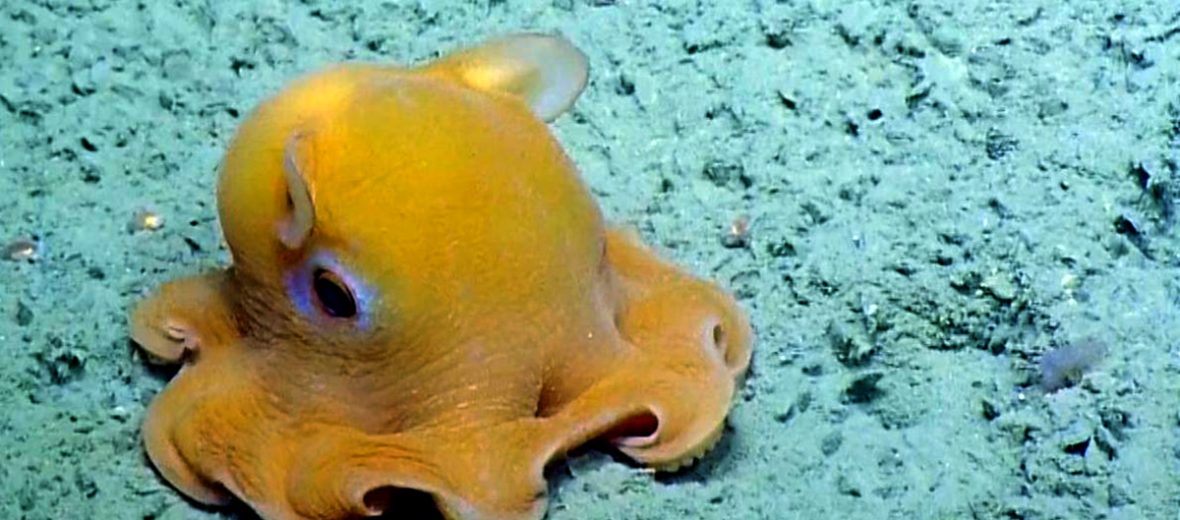
The dumbo octopus is named after the flying, cartoon elephant; due to the presence of it’s floppy ear-like fins on either side of it’s body. There are approximately 37 known species of dumbo octopuses. They are located in oceans around the world. These cephalopods are generally listed as Data Deficient by the IUCN, due to the lack of information about their overall numbers.
First the Stats…
Scientific name: Grimpoteuthis
Weight: Up to 13+ lbs.
Length: Up to 5+ feet
Lifespan: Up to 5 years
Now on to the Facts!
1.) The dumbo octopus lives comfortably at about 23,000 feet in the dark ocean depths.
2.) Most species of these critters measure in at about 8 inches across.
3.) Males have longer suckers and possess 2 tentacles that aid in reproduction.
4.) Their colors vary from green, to orange, to red.
5.) A dumbo octopus can move about via their fins, expanding and contracting it’s arms, or by jet propulsion, via their funnel. They, if needed, can also use all 3 methods for a faster getaway.
But wait, there’s more on the dumbo octopus!
6.) The arms have small, sharp barbs that are used for gripping onto prey.
7.) Their primary known predators are orcas and sharks.
Did you know…?
Due to a small mouth, their prey rarely exceeds .08 inch across.
8.) When towards the bottom of the ocean, they prey on bivalves, crustaceans, various worms various copepods (plankton), isopods, bristle worms, and amphipods.
9.) Dumbo octopuses swallow their prey whole.
10.) During mating, the male will use and typically lose, 1 of his tentacles to deliver sperm packets to the female.
But wait, there’s still more on the dumbo octopus!
11.) The fertilized eggs are released, once developed enough, onto the undersides of objects, like rocks.
12.) The female will not guard the eggs. They are left to their own devices.
13.) The newly hatched octopuses are precocial (fully developed and self-sufficient).
14.) Dumbos are the deepest dwelling octopuses known to science.
Now a Short Dumbo Octopus Video!
Be sure to share & comment below! Also, check out the Critter Science YouTube channel. Videos added regularly!
Want to suggest a critter for me to write about? Let me know here.



